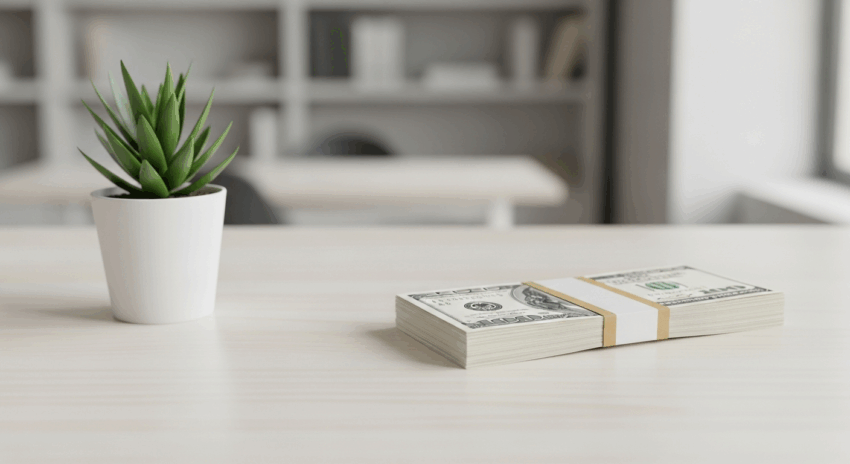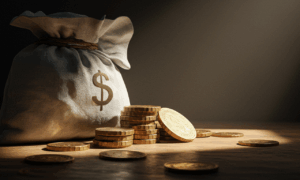How to Create an Emergency Fund: Your Ultimate Guide to Financial Security
Life is full of surprises, and not all of them are pleasant. An unexpected car repair, a sudden job loss, or a medical issue can strike without warning, creating significant financial and emotional stress. Learning how to create an emergency fund is not just a smart financial move; it is the cornerstone of a solid financial plan and your first line of defense against uncertainty. This essential cash reserve provides a buffer, allowing you to handle unexpected costs without derailing your long-term goals or resorting to high-interest debt. This article will provide a clear, step-by-step roadmap to building and maintaining a robust financial safety net.
Think of an emergency fund as your personal financial fire extinguisher. You hope you never have to use it, but when a crisis erupts, you will be immensely grateful it is there. Its primary purpose is to cover essential expenses during a period of lost income or for a large, unforeseen cost. This is not money for a vacation, a down payment on a car, or a new gadget. It is strictly for true emergencies that would otherwise force you into debt. Having this fund in place provides invaluable peace of mind, knowing you can weather a financial storm with confidence.
What Constitutes a True Emergency?
Defining an emergency is crucial to using your fund correctly. Generally, a situation qualifies if it is:
- Unexpected: You could not have reasonably planned for it.
- Urgent: It requires immediate financial attention.
- Necessary: It is essential for your health, safety, or ability to work (e.g., a major home repair like a burst pipe, not a cosmetic upgrade).
Examples include loss of employment, urgent medical or dental expenses not covered by insurance, critical car repairs that prevent you from getting to work, or emergency travel for a family crisis. By setting clear boundaries, you protect the fund for when it is truly needed.

Calculating Your Emergency Fund Goal: The 3-to-6-Month Rule
The most common financial advice is to save 3 to 6 months of essential living expenses. This range allows for flexibility based on your personal circumstances. To determine your specific goal, you need to calculate exactly how much you spend on necessities each month. This is not your total monthly income, but rather the bare-bones budget you would need to survive.
Start by listing your non-negotiable monthly costs:
- Housing: Rent or mortgage payments.
- Utilities: Electricity, water, gas, and internet.
- Food: Groceries and basic household supplies.
- Transportation: Car payments, insurance, fuel, or public transit passes.
- Insurance: Health, auto, and life insurance premiums.
- Debt Payments: Minimum payments on student loans, credit cards, or other loans.
Once you have a total for one month’s essential expenses, multiply that number by three for your minimum goal and by six for a more comfortable cushion. For example, if your essential expenses total $2,500 per month, your emergency fund goal would be between $7,500 and $15,000.
When Should You Aim for More Than 6 Months?
While 3-6 months is a solid benchmark, some situations warrant a larger safety net. Consider saving for 6 to 12 months if you are a freelancer with variable income, the sole provider for your family, work in an unstable industry, or have chronic health concerns. The more financial dependents and uncertainty you have, the larger your financial cushion should be.
Step-by-Step: How to Build Your Fund from Scratch
Knowing your target number is the first step; now it is time to take action. Building an emergency fund requires discipline and a clear strategy. Follow these steps to start accumulating your savings effectively.
1. Open a Separate Savings Account
Do not keep your emergency fund in your primary checking account. It is too easy to spend it accidentally. Open a dedicated, separate savings account for this purpose only. A high-yield savings account (HYSA) is an excellent choice because it offers a better interest rate than a traditional savings account, allowing your money to grow slightly while remaining completely accessible. The key here is liquidity—you must be able to access the funds quickly without penalty.
2. Start Small and Automate
If your final goal feels overwhelming, start with a smaller, more achievable target, like saving your first $1,000. This initial milestone can provide a significant psychological boost. The most effective way to save consistently is to automate the process. Set up an automatic transfer from your checking account to your emergency savings account each payday. Treat this transfer like any other bill. Even a small amount, like $50 or $100 per paycheck, adds up significantly over time. For more tips on making your money work for you, explore our articles on savings strategies.
3. Find Extra Money in Your Budget
Scrutinize your current budget to identify areas where you can cut back temporarily. This could mean reducing subscriptions, cooking at home more often, or pausing discretionary spending until you reach your savings goal. Additionally, dedicate any financial windfalls directly to your emergency fund. This includes tax refunds, work bonuses, rebates, or money from selling items you no longer need. This can dramatically accelerate your progress.
Where to Keep Your Emergency Fund: Safety and Accessibility First
The location of your emergency fund is just as important as the amount. The primary goals for this money are safety and accessibility, not high returns. This means you should avoid putting your emergency savings into assets that carry risk or are not easily converted to cash.
Your emergency fund is not an investment. Do not place it in the stock market, mutual funds, or real estate. While these can be great for long-term wealth building, their value can fluctuate, and you could be forced to sell at a loss if an emergency strikes during a market downturn. The goal is to preserve your capital so it is there when you need it.
The best vehicles for an emergency fund are:
- High-Yield Savings Accounts (HYSAs): As mentioned, these are often the top choice. They are FDIC-insured (up to the legal limit), completely liquid, and offer competitive interest rates.
- Money Market Accounts: These are similar to savings accounts and also offer FDIC insurance and liquidity, sometimes with check-writing privileges. Compare rates to see what works best for you.
Conclusion: Your Path to Financial Peace of Mind
Building an emergency fund is a foundational step toward achieving genuine financial security. It is a deliberate act of self-care that protects you and your loved ones from the financial shocks of life. By defining what an emergency is, calculating your 3-to-6-month savings goal, and implementing an automated savings strategy, you can systematically build a powerful financial buffer. This fund empowers you to make decisions based on what is best for your situation, not out of desperation, and keeps you on track toward your broader financial goals.
Frequently Asked Questions (FAQ)
Should I pay off debt or build an emergency fund first?
This is a common dilemma in personal finance. Many financial experts recommend a balanced approach. First, save a small starter emergency fund of around $1,000. This provides a small cushion for minor emergencies so you do not have to take on more debt. After that, focus aggressively on paying down high-interest debt, like credit cards. Once that is under control, shift your focus back to fully funding your emergency reserve of 3 to 6 months of expenses.
What if I have to use my emergency fund?
If a true emergency occurs, use the fund without guilt—that is what it is for. The most important step after using some or all of the money is to create a plan to replenish it as quickly as possible. Pause other financial goals, like extra retirement contributions or investment activities, and redirect that money to rebuild your safety net. Once it is fully funded again, you can resume your other financial objectives.
Is my emergency fund protected from inflation?
While funds in a high-yield savings account will earn some interest, it may not always keep pace with inflation. However, the primary purpose of an emergency fund is not to generate returns but to provide liquidity and stability. The risk of losing purchasing power to inflation is minor compared to the risk of not having accessible cash during a crisis and being forced into high-interest debt. The security it provides far outweighs the impact of inflation in the short term.





